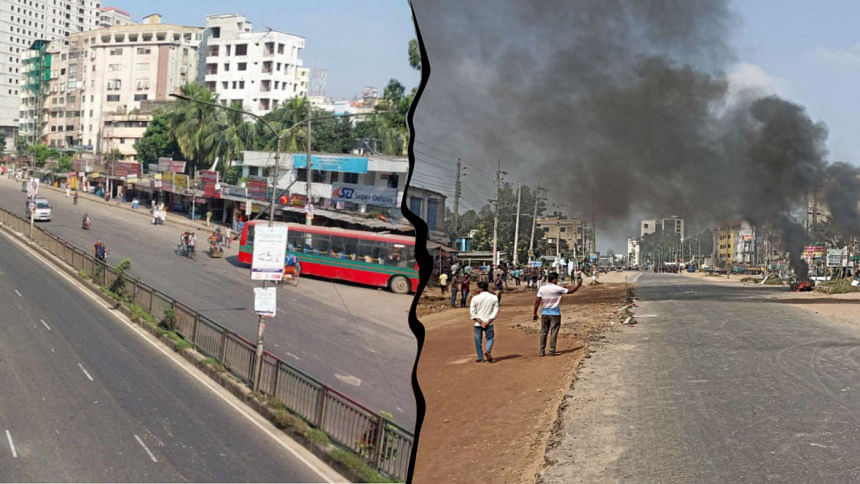Difference between hartal and oborodh explained

Hartal and oborodh (blockade) have been part of the Bangladeshi political reality for decades. As the political situation has tensed up after BNP's October 28 rally ended in violence, around 80 percent of working days have seen the opposition parties calling for either a hartal or a blockade.
From the perspective of the general population, both of these political activities cause disruptions to daily life. While the ground reality during a day of hartal may be difficult to discern from that of a day of oborodh, some important differences exist.
Hartal, often translated to a general strike, refers to a complete shutdown of economic activity with the aim to achieve a political goal. The word itself comes from the Gujarati-origin words "Har", meaning everywhere, and "tal", possibly relating to "tala", which means lock.
Historically, it is said that Mahatma Gandhi initiated the use of hartals during the anti-British movement of the early 20th century. Since then, hartals have been used as a political tool for protest all over the Indian subcontinent. The word is in use even in southeast Asia. In 2021, a nationwide medical officers' strike took place in Malaysia, and it is known as "Hartal Doktor Kontrak".
In Bangladesh, hartals have been used by opposition parties at various points in history. Before independence, during the Pakistani rule, hartals were used to shut down all sorts of economic activity in a show of civil disobedience, with popular support. Afterwards, hartals have been prevalent in the Bangladeshi political landscape, used mainly to achieve political demands.
Oborodh is another mode of political action that has become more prevalent than hartals during the recent political crisis in Bangladesh. It is often translated to the word "blockade" in English, which is simply the act of blocking movement of people or goods into and out of certain areas. In Bangladesh, it practically boils down to restrictions to inter-district movements. Inner city movement is also affected, as the amount of available public transport is lowered significantly.
We spoke to Mohammad Aynul Islam, Associate Professor at the Department of Political Science, Dhaka University, about the difference between hartal and blockadein the political context of Bangladesh.
"In the implementation sense, hartal happens nearer to the everyday lives of people, while oborodhhas more to do with highways and roads. Oborodh happens on a wider scale. A successful hartal is omnipresent, and it has to have spontaneous participation of people. An oborodh, on the other hand, has to be implemented by whoever calls it," he said.
When asked about the changing trend of a higher number of blockades compared to hartals in the recent past, Aynul Islam said, "Possibly due to the economic state of Bangladesh, and maybe because of some other factors as well, people aren't getting involved in hartals as much. This may be a reason why oborodh is more common, because they may be regarded as more implementable."
In theory, the success of a hartal or a blockade requires public support, if not active participation. In practice, however, the difference between hartal and blockadebecomes blurry as public life is disrupted and suffering is increased in both instances.

 For all latest news, follow The Daily Star's Google News channel.
For all latest news, follow The Daily Star's Google News channel. 







Comments